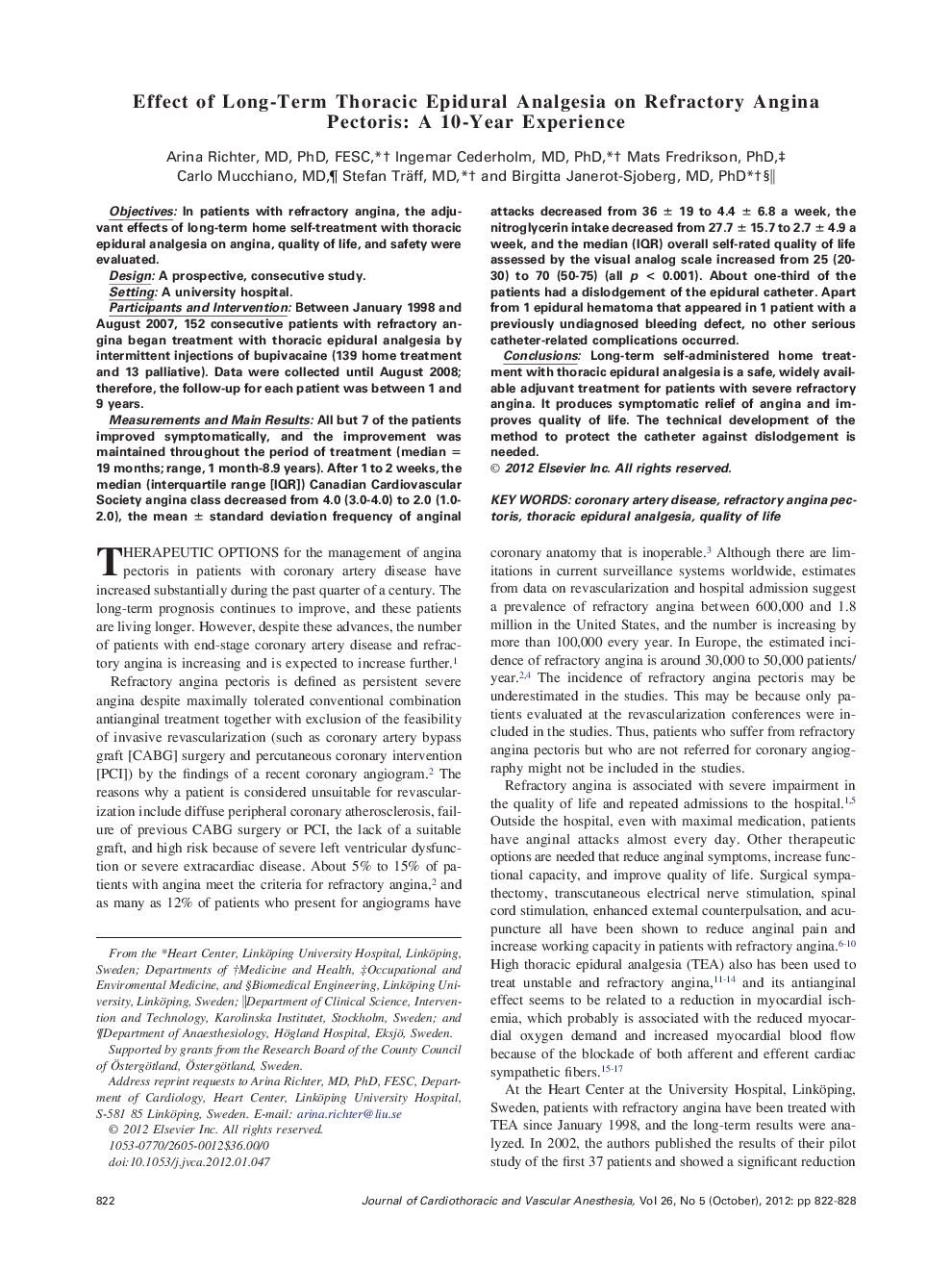| کد مقاله | کد نشریه | سال انتشار | مقاله انگلیسی | نسخه تمام متن |
|---|---|---|---|---|
| 2760342 | 1150171 | 2012 | 7 صفحه PDF | دانلود رایگان |

ObjectivesIn patients with refractory angina, the adjuvant effects of long-term home self-treatment with thoracic epidural analgesia on angina, quality of life, and safety were evaluated.DesignA prospective, consecutive study.SettingA university hospital.Participants and InterventionBetween January 1998 and August 2007, 152 consecutive patients with refractory angina began treatment with thoracic epidural analgesia by intermittent injections of bupivacaine (139 home treatment and 13 palliative). Data were collected until August 2008; therefore, the follow-up for each patient was between 1 and 9 years.Measurements and Main ResultsAll but 7 of the patients improved symptomatically, and the improvement was maintained throughout the period of treatment (median = 19 months; range, 1 month-8.9 years). After 1 to 2 weeks, the median (interquartile range [IQR]) Canadian Cardiovascular Society angina class decreased from 4.0 (3.0-4.0) to 2.0 (1.0-2.0), the mean ± standard deviation frequency of anginal attacks decreased from 36 ± 19 to 4.4 ± 6.8 a week, the nitroglycerin intake decreased from 27.7 ± 15.7 to 2.7 ± 4.9 a week, and the median (IQR) overall self-rated quality of life assessed by the visual analog scale increased from 25 (20-30) to 70 (50-75) (all p < 0.001). About one-third of the patients had a dislodgement of the epidural catheter. Apart from 1 epidural hematoma that appeared in 1 patient with a previously undiagnosed bleeding defect, no other serious catheter-related complications occurred.ConclusionsLong-term self-administered home treatment with thoracic epidural analgesia is a safe, widely available adjuvant treatment for patients with severe refractory angina. It produces symptomatic relief of angina and improves quality of life. The technical development of the method to protect the catheter against dislodgement is needed.
Journal: Journal of Cardiothoracic and Vascular Anesthesia - Volume 26, Issue 5, October 2012, Pages 822–828